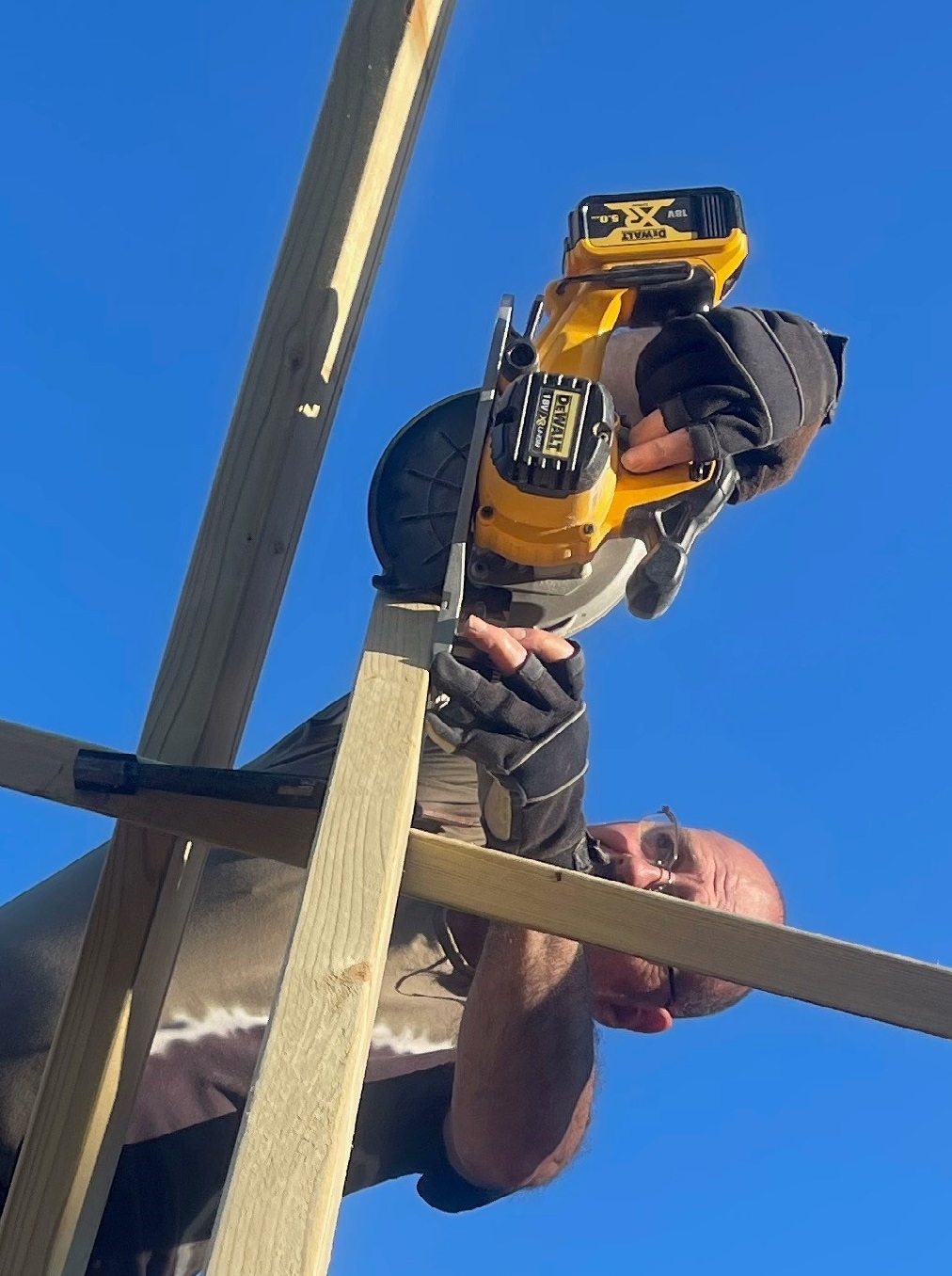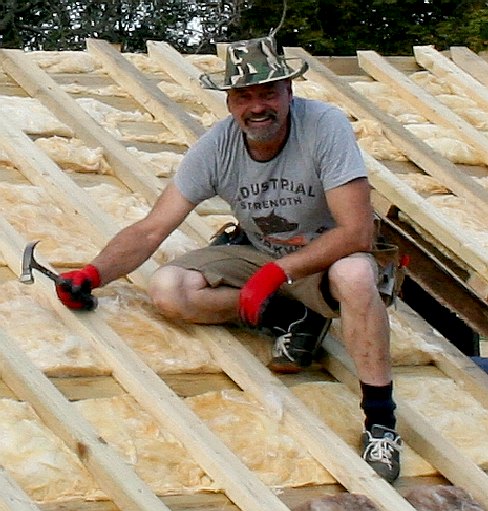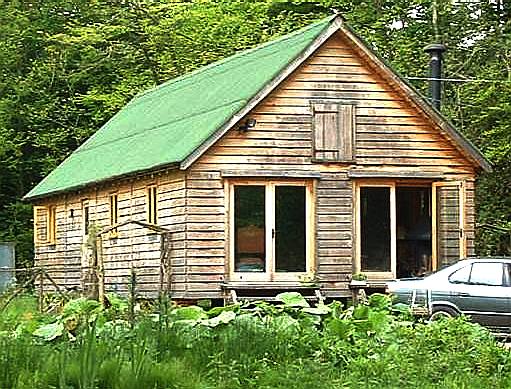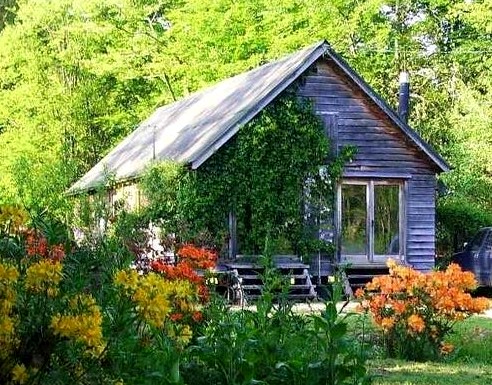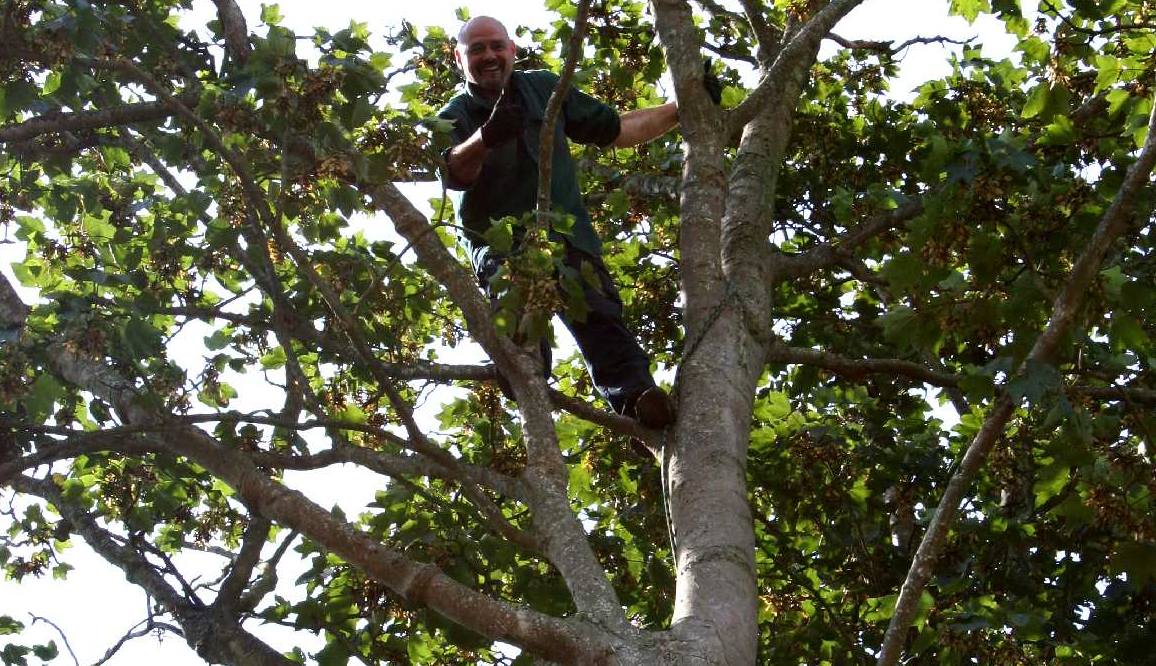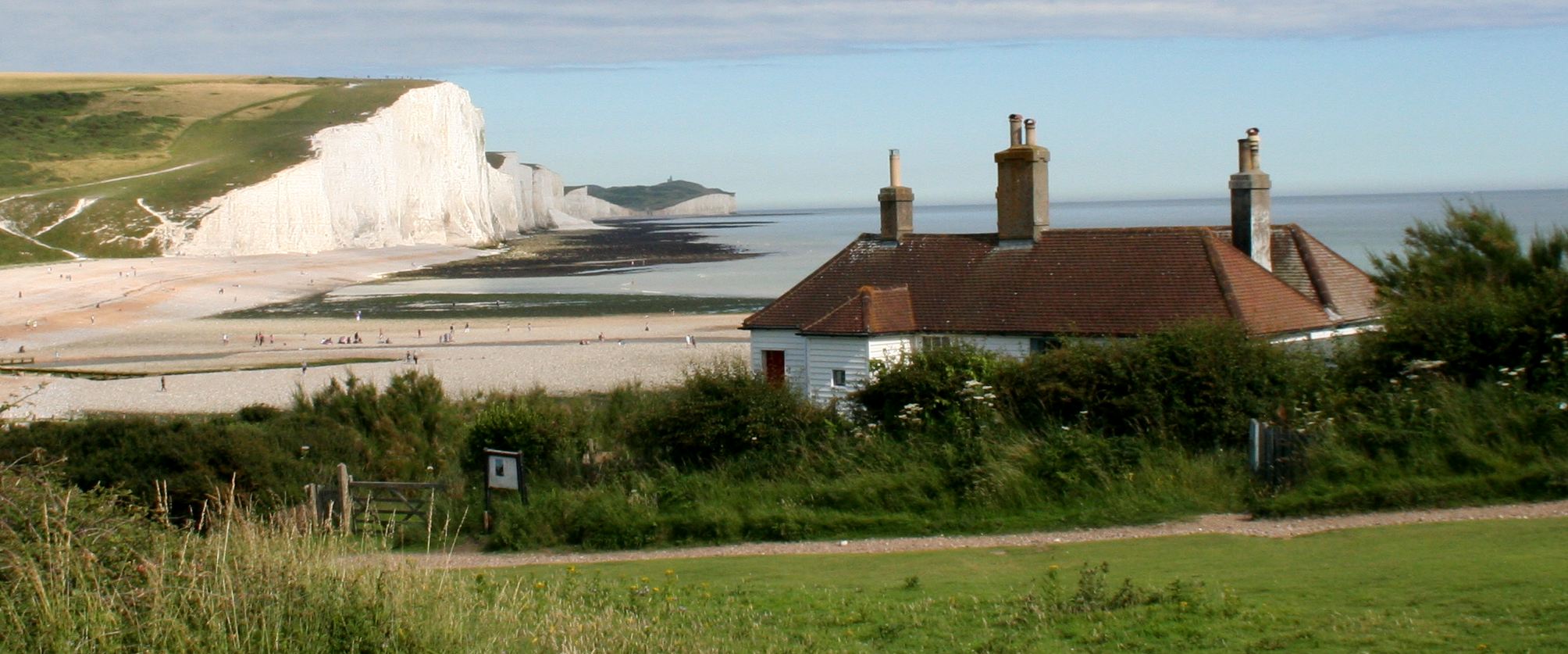|
SUSTAINABLE TIMBER BUILDINGS
|
|
|
CARBON LOCK - Nelson believes that all new buildings should be built from sustainably sourced timber, to lock up carbon. We should get as far back to nature as possible, while still retaining the comfort of modern conveniences. As you may decide from these pictures, some construction work is highly specialized and not for the feint of heart. For example, positional cutting with a trusty DeWalt battery powered circular saw is very demanding. Timber, steel or aluminium, it's all the same to our special projects coordinator. Skills overlap, useful in sorting potential hiccups with any project. Nelson is hands on when it is required. As to working at heights, Darwin was most likely right. Judging by our love of unusual AirBnBs, we probably descended from tree dwellers. Copyright © pictures, Cleaner Ocean Foundation, September 25 2021. Health & Safety Notice: Always work in teams - and don't try this at home kids. The most common injury on site is hitting your thumb with a hammer. Let's leave it at that. Keep fingers well away from power tool blades.
Wearing his bushman hat in 2017, Nelson is seen here on a roof installing purlins, rafters and loft insulation on one of the Foundation buildings, keeping water out of the workshops and (hopefully) plastic out of the oceans. One day he may be a potential contender for Mister Ocean where his efforts have been continuous and ongoing.
CLIMATE CHANGE
Coal is a natural way of compressing and storing carbon. Timber is less dense, but also locks up carbon dioxide. Timber is a sustainable resource and should be planted and harvested all over the world. In the UK we are reliant on timber imports. Timber prices almost doubled in 2021, proof that we are not planting enough trees. Covid 19 showed us how vulnerable our economy is. How poorly planned, and that there is no agricultural strategy to rectify. We wonder how many other countries are in such a poor state of preparation, should food and commodity shortages trigger another worldwide conflict.
In 2021 the UK suffered petrol panic buying again, and electricity price rises. Despite the fact that we could be energy self-sufficient, if the right technology was developed, to make hydrogen the energy carrier of the future.
AFFORDABLE HOUSING - Wooden homes are warm and economical to install as self-builds, but even recently (2019) councils use their powers to enforce to resist such development, where they prefer executive homes for the uplift in rates and to protect favoured landlords investments in high priced rentals that working people cannot afford. Appeals typically cost more than the homes that have been built and ruin the lives of citizens trying to lead a low carbon lifestyle. This is one reason there is a shortage of sustainable housing in England. In Nelson's view these are questionable policies that green politicians might want to review. The unit above cost £15,000 to install as a flat-pack in 2006, it would be in the region of £25,000 in 2019. In Nelson's opinion, Councils should be looking to spend their Community Infrastructure Levies (CIL) on land acquisition via compulsory purchases, to secure a rolling stock of land for those wishing to join the climate change revolution and build their own home. The owner of this unit paid out more on legal fees fighting a council who could not see the wood for the trees. Nelson took the case late in the day and proved this unit was compliant with the Caravans Act, winning an appeal to the Secretary of State for his client. So saving the building from demolition.
AFFORDABLE HOUSING
In 2011 Nelson designed a low cost flatpack unit made of timber to help youngsters escape a life of renting, but mainly as a carbon lock and virtually energy self-sufficient unit in line with SDG11 of the United Nations goals for 2030. At the time there were no takers. He wonders if perhaps those local authorities approached in 2012 should have been a little more proactive, where the present housing shortage statistics are staggering.
In some cases of hardship, Nelson is available as an advocate on a no-win, no-fee basis, in enforcement planning appeals concerning flatpacks and self-build housing, having set the benchmark caselaw precedent for timber mobile homes (see above) in Sussex, England.
CLIMBING - Getting back in touch with his roots in 2016, Nelson loved the view of the Sussex countryside from this tree in his back yard. It reminds him of one of his favourite films: Medicine Man, about a researcher who discovers a cure for cancer in the Amazonian rain forest then loses it - but we are left with the hope that he will find it again. Sadly, this tree was damaged at the base of its trunk and needed to be reduced in height significantly to give it any chance of survival. It helps to have practical skills when giving nature a helping hand.
FAVOURITE WALKS - This famous view is also one of Nelson's much-loved walks. These are the old coastguard cottages, now privately owned, seen from above when walking to the beach from the car park. Who would not want to live with such a beautiful view, the sea winds and waves lapping on the beaches below. Copyright © 18 July 2016, all rights reserved.
LINKS & REFERENCE
https://
Copyright © 2021 Cleaner Oceans Foundation.
|

